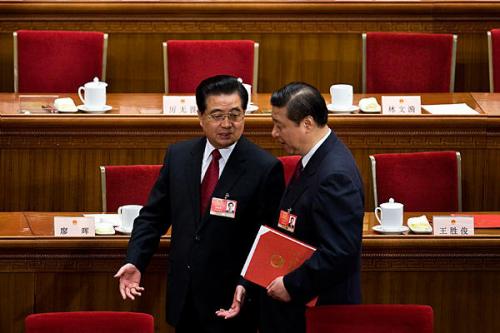
Two days after US voters head to the polls, the People’s Republic of China will select its next generation of leaders, albeit in a less democratic fashion.
Among international audiences, the respective outlooks for the United States and China provide a stark contrast; China is viewed as the rising power, while the United States is presumed to be heading towards an inevitable decline. However, when comparing the long-term problems that confront China, Americans should feel reassured.
This notion may come as a surprise to many people. Indeed, a 2011 survey conducted by the Pew Research Center indicates that Americans and Europeans alike mistakenly believe that China’s economy is larger than the United States’ when in reality it’s less than half the size. This misconception highlights the growing sentiment of American pessimism, juxtaposed by China’s astronomical growth. After all, China is building the tallest skyscrapers, the longest bridges, the largest museums. Visit Times Square and you will be overwhelmed with video boards advertising Chinese news and tourism agencies. China seems to be everywhere these days, and their success has been envied in the American press. New York Times columnist Thomas Friedman even went so far as to publicly declare his yearning to be “China for a day” in order to solve national issues in a timely manner.
Political gridlock and economic stagnation in the United States have caused Americans to question the functionality of their own system and whether China’s hybrid form of state capitalism has rendered western democracy suboptimal. With a stagnant economy and an impending debt crisis, there is much for the average American to be worried about. Compared with the astounding growth of China in the last decade, it is sensible to think that China is moving in the opposite direction, and quickly.
Yet, when one begins to look beyond the veneer of China’s rise to prominence, a number of systemic problems are revealed. Chief among them are lopsided demographics. China will be the first country in modern history to age before it is developed. In the near future, while China’s per capita GDP will still be a fraction of that in Western countries, it will be forced to deal with a shrinking labor force and a growing elderly population that will drain the Chinese fiscal system.
China is also dealing with disastrous environmental problems. A World Bank report claimed that China contained thirteen of the world’s twenty most polluted cities. It is estimated that 750,000 Chinese die prematurely as a result of pollution every year, a number that is projected to increase. China’s energy crisis compounds its environmental problems, and will also grow in severity over the coming years. In the last decade, China’s energy usage increased by 150%, overtaking the United States as the world’s largest consumer of energy. These demands will continue to grow, and China will need to look outwards in order to satisfy its expanding needs. As US energy independence increases as a result of new developments in shale gas extraction, China will become dependent on the Middle East and other regions for supplies of oil.
These energy demands have already begun to influence China’s foreign policy. The era of a “peaceful rise” is giving way to increasingly aggressive behavior towards its neighbors. China claims nearly the entirety of the South China Sea, which is rich in oil and contested by five countries. Neighbors, including the Philippines, Thailand, and Vietnam, have reacted by boosting their military spending and increasing their partnerships with the United States, increasing tensions across the region.
Beyond these territorial disputes, China’s foreign influence has weakened considerably in recent years. In the last year Burma has positioned itself closer to the United States, making China’s only remaining partner in the region North Korea–the world’s pariah state and a ticking time bomb. The most recent disputes with Japan over islands in the East China Sea had a devastating impact on the China-Japan relationship, which is of enormous economic value to China. Surrounded by vigilant neighbors who are wary of its actions, China’s regional relations are likely to deteriorate as its voracious appetite for energy and commodities grows.
Underlying all of these problems is the apparatus that seeks to solve them, the Chinese Communist Party. Shrouded in secrecy, and protected by the ‘great firewall’ of censorship, the CCP operates on the basis of its own survival, seeking to extract whatever dividends it can from the Chinese people in the process. Premier Wen Jiabao, whose family amassed over 2.5 billion dollars as a result of government kickbacks, serves as a prime example of the corruption in the system. With an incoming leadership core composed of second generation ‘princelings,’ corruption in China is set to rise and transparency unlikely to emerge at any point in the near future. Public frustration against the Chinese Communist Party is so great that it must spend more on domestic security than national defense. From the perspective of China’s leaders, their most serious threat is the citizens they are supposed to serve.
To be clear, the problems that the United States must confront in coming years are tremendous. Political polarization is at an unprecedented level at a time when cooperation is necessary to avoid a debilitating fiscal crisis. Nonetheless, the long-term issues that the United States must confront pale in comparison to the problems Chinese leaders are tasked to solve in the upcoming decades. The nature of Chinese government, while hailed as the reason for China’s recent success, may ultimately prove to be its downfall.
Philip Haxel is an intern for the Atlantic Council’s Asia Security Initiative under the Brent Scowcroft Center on International Security.
Image: 1019-OXI-China-Politics_full_600.preview.jpg
